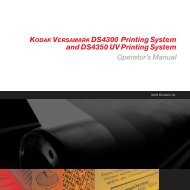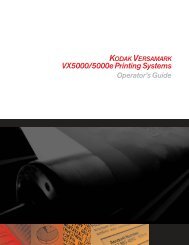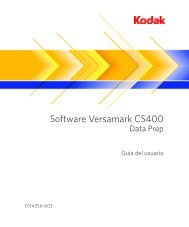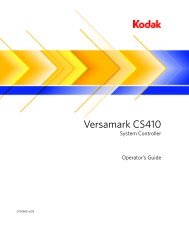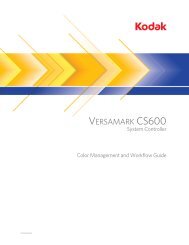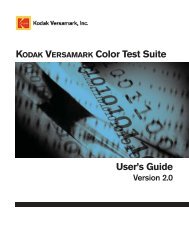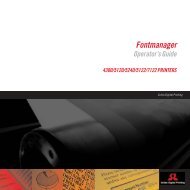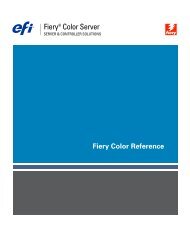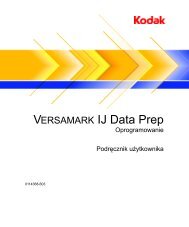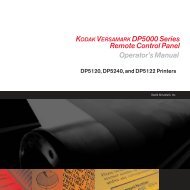You also want an ePaper? Increase the reach of your titles
YUMPU automatically turns print PDFs into web optimized ePapers that Google loves.
Chapter 4. Record Formats<br />
Two-Byte Image Line (SIL)<br />
Two-Byte Image Line (SIL)<br />
The SIL record contains the characters for a line of print. It is the same as<br />
the IML record except that two bytes are used to identify each character.<br />
For a category I super font, the first byte is for the subfont number and the<br />
second byte is for the character within that subfont. A category II font is<br />
not divided into subfonts so the two bytes simply identify the desired<br />
character. The current font must be a super (double-byte) font when this<br />
record occurs or an error occurs and printing stops.<br />
Byte Position Bytes Field Name Description<br />
4 - 42 IJPDS Formats<br />
If there is no text included, a blank line will be printed.<br />
If the multi-part line mode is enabled by an MPL record, the cursor is left<br />
at the end of the text printed by this record and is not positioned for the<br />
next line.<br />
1-2 2 Record Length The length of this record, in binary, including the record length<br />
field. For example, hex 00 30 specifies a record length of 48 bytes.<br />
3 1 Cyclic Record Count A binary cyclic record count using modulo 256. Each record in the<br />
job is counted, starting with hex 01 for the first record. The 255th<br />
record is hex FF and the 256th record is hex 00. This count is used<br />
to verify record sequence.<br />
4 1 Control Code A binary code that identifies the record type. A value of hex 2B<br />
identifies the SIL record.<br />
5-n n Print Line A character string representing a line of text. The character coding<br />
must agree with the coding of characters in the font. There is no<br />
end-of-line character.<br />
Each character is identified using two bytes.



